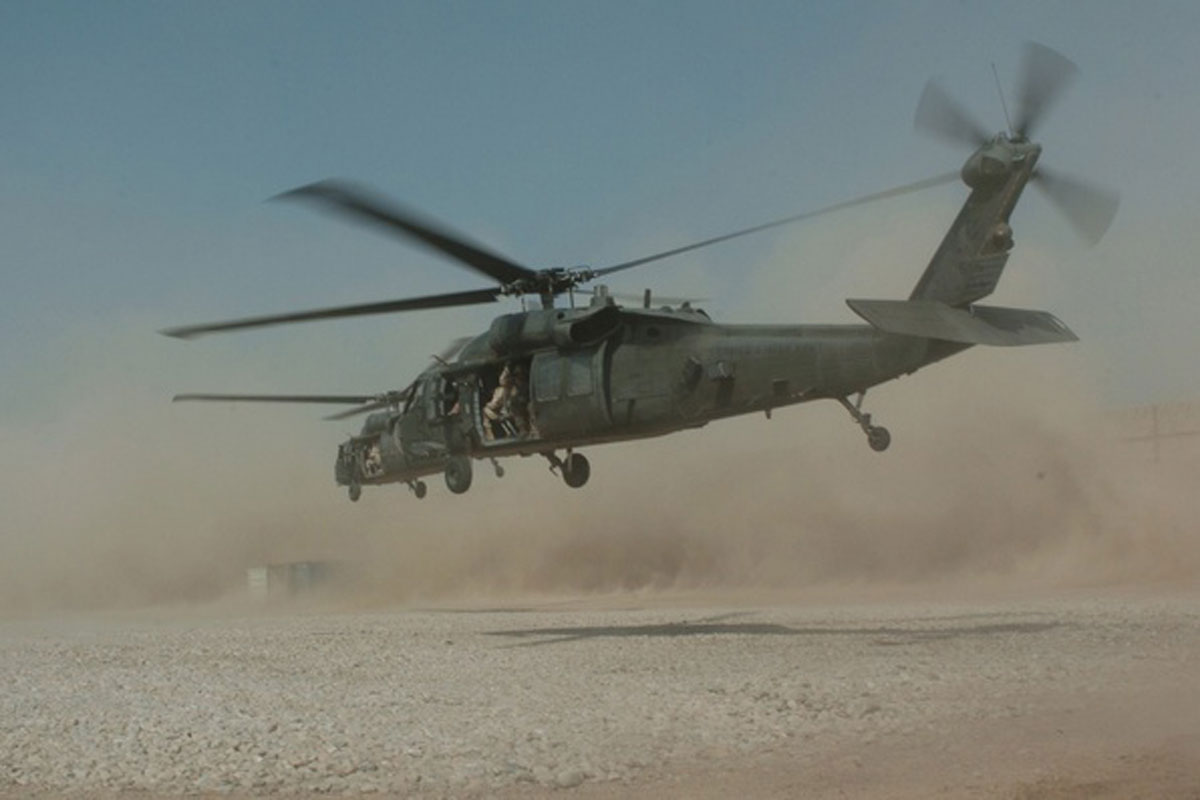Flight Ready: Ensuring Optimum Condition for Your UH 60 Helicopter
Flight Ready: Ensuring Optimum Condition for Your UH 60 Helicopter
Blog Article
Recognizing the Mechanics and Design Behind Uh 60 Helicopters
The UH-60 helicopter, generally called the Black Hawk, stands as a pinnacle of contemporary rotorcraft technology, personifying a blend of durable engineering and intricate auto mechanics. From its beginning to its existing iterations, the development of this aircraft showcases a fusion of technology and functionality. As we peel back the layers of the UH-60's design, a globe of elaborate systems and careful design emerges. Comprehending the auto mechanics and design behind this flexible aircraft introduces a realm where precision meets power, and where each element plays a crucial duty in attaining flight.
Background of UH-60 Helicopters
The history of UH-60 helicopters traces back to the late 1970s when the United States Army sought a functional and sophisticated energy helicopter to replace its aging fleet. In feedback to this need, the Sikorsky Aircraft Corporation established the UH-60 Black Hawk helicopter. Introduced in 1979, the UH-60 promptly became a staple in armed forces operations as a result of its outstanding capabilities.
The UH-60 was developed to master a variety of goals, consisting of troop transportation, medical emptying, electronic warfare, and unique operations. Its capability to adapt to different functions made it a useful possession to the united state Army and other military forces around the globe
Over the years, the UH-60 platform has gone through a number of upgrades and variants to improve its performance and keep speed with progressing mission needs. These helicopters have actually seen comprehensive solution in problems such as the Gulf Battle, Afghanistan, and Iraq, showcasing their integrity and flexibility in varied operational atmospheres. The UH-60's abundant background is a testimony to its long-lasting tradition as a top energy helicopter.

Engine and Power Equipments
Utilizing cutting-edge propulsion technology, UH-60 helicopters are furnished with sophisticated engine and power systems to ensure optimum efficiency and dependability in a range of operational circumstances. The UH-60, generally called the Black Hawk, is powered by 2 General Electric T700-GE-701D engines, each with the ability of providing up to 1,940 shaft horsepower. These turboshaft engines offer the necessary drive for the helicopter to execute its goals effectively, consisting of army transport, medical emptying, and combat support.

Rotor System and Aerodynamics
Just how do the rotor system and aerodynamics of UH-60 helicopters add to their functional effectiveness and trip capacities? The rotor system of the UH-60 helicopter plays an essential duty in providing lift and propulsion.
The rules of aerodynamics likewise play a vital role in the efficiency of UH-60 helicopters. The structured fuselage and rotor blade design reduce drag, allowing the helicopter to accomplish higher speeds and better fuel effectiveness. The wind resistant design of the UH-60 likewise adds to its capability to run in diverse ecological conditions, including hot temperatures and high elevations.
Avionics and Trip Control Equipment

In its detailed control with the blades system and the rules of aerodynamics of UH-60 helicopters, the avionics and flight control systems create a critical network of modern technologies shaping the airplane's operational capabilities. In the UH-60, these systems include electronic display screens, interaction radios, General practitioner navigating, climate radar, and auto-pilot systems.
The flight control systems of the UH-60 are responsible for equating the pilot's inputs into the ideal adjustments to the rotor system, making certain secure flight and maneuverability. These systems include hydraulic actuators, servos, and computers that interact to control the main and tail rotors, in addition to various other trip control surfaces. By precisely taking care of the helicopter's trip dynamics, these systems enable pilots to perform a variety of missions, from transportation and search-and-rescue to fight procedures, with accuracy and self-confidence.
Function and Applications in Air Travel
Avionics systems in UH-60 helicopters include an array of digital systems that aid in navigation, interaction, monitoring, and regulating different airplane features. These systems consist of electronic displays, auto-pilot systems, communication radios, General practitioner navigating devices, and climate radar. Furthermore, these systems incorporate safety and security features such as auto-pilot modes, terrain recognition alerting systems, and security enhancement systems to improve the overall safety and security and operational capacities of the UH-60 visit this page helicopters in different goals, including troop transportation, clinical evacuation, search and rescue, and airborne firefighting.
Final Thought
In final thought, the UH-60 go to website helicopter is a flexible airplane with a rich background and advanced engineering. Its engine and power systems, blades system, aerodynamics, avionics, and flight control systems all function with each other to make it a reliable and effective equipment.
In its intricate sychronisation with the blades system and aerodynamics of UH-60 helicopters, the avionics and flight control systems create a critical network of innovations shaping the airplane's functional abilities.The trip control systems of the UH-60 are accountable for equating the pilot's inputs into the suitable adjustments to the blades system, ensuring steady trip and maneuverability. Avionics systems in UH-60 helicopters incorporate a range of digital systems that aid in navigating, communication, surveillance, and managing numerous airplane functions. Furthermore, these systems integrate safety and security functions such as autopilot modes, terrain understanding warning systems, and stability enhancement systems to improve the total safety and functional capacities of the UH-60 helicopters in numerous goals, consisting of troop transportation, medical discharge, search and rescue, and airborne firefighting.
Its engine and power systems, blades system, aerodynamics, avionics, and trip control systems all function together to make it a trustworthy and reliable device.
Report this page